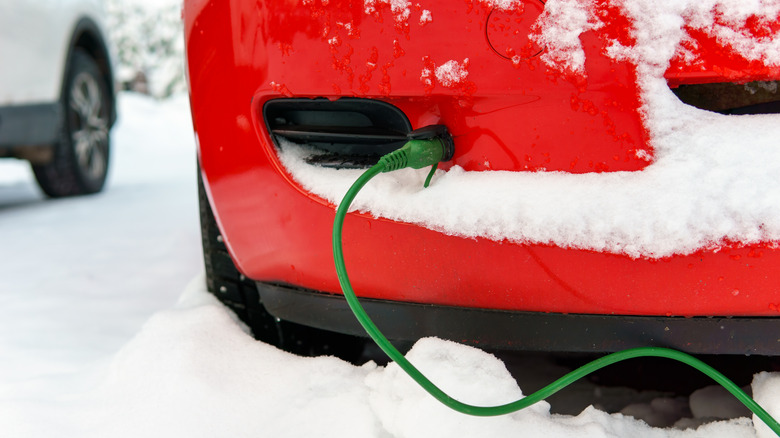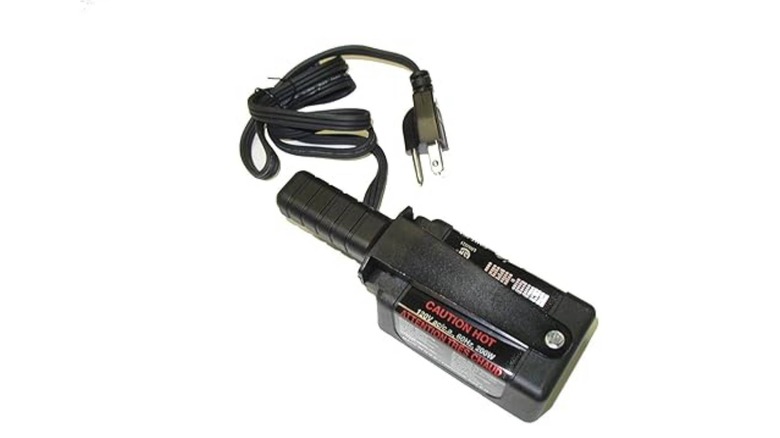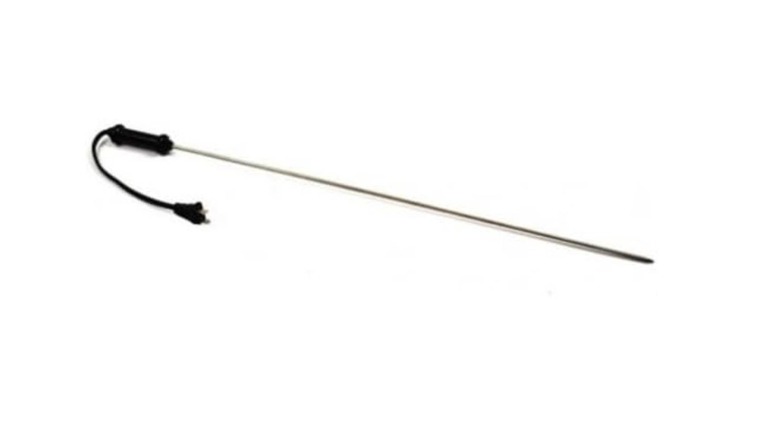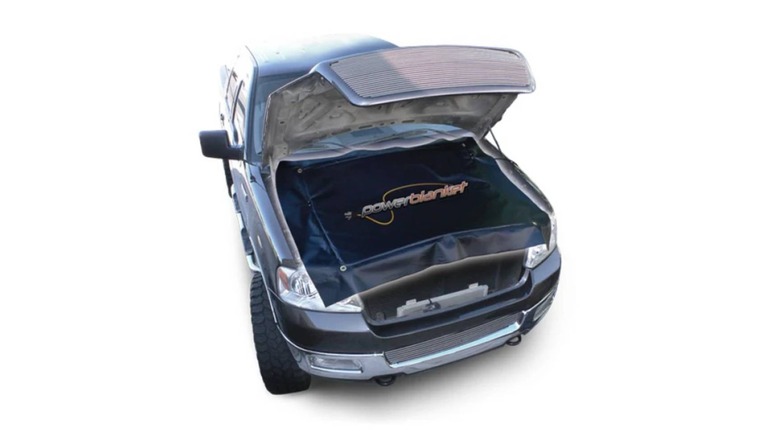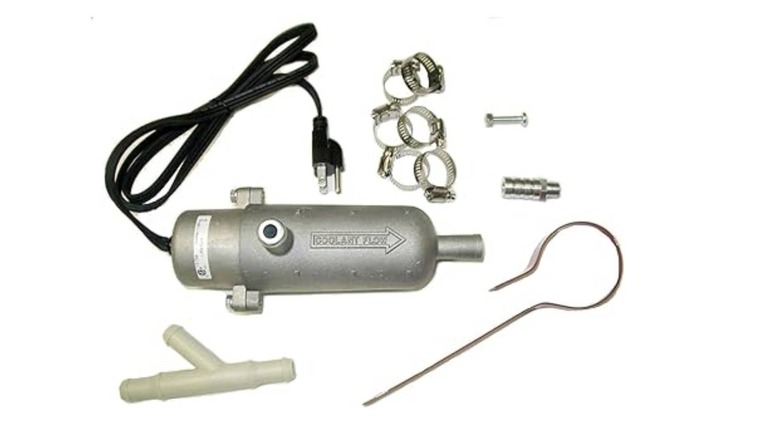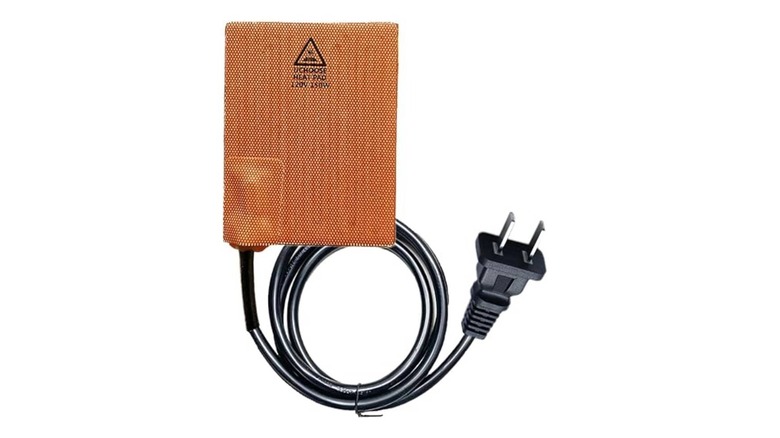5 Block Heater Alternatives For Diesel Engines
We may receive a commission on purchases made from links.
Diesel engines are known for their fuel efficiency and high torque delivery, but freezing temperatures can push them to the limit. When the thermometer drops below 20-degrees Fahrenheit, starting a diesel engine becomes challenging due to reduced battery efficiency and the thickening of diesel engine oil, which can cause issues like reduced engine performance and premature wear and tear of components. These conditions prevent your car from achieving a cold start, which is when the ambient temperature is lower than the engine's normal operating temperature. One of the tips for starting your diesel engine in the cold is to use an engine block heater.
This is an electrical device designed to warm up your vehicle's engine and its fluids in cold weather, giving you smooth starts. It also prevents damage caused by cold starts and idling. Traditionally, a lot of modern diesel-powered vehicles come equipped with a block heater. This includes diesel-powered trucks such as the Dodge Ram with its Cummins engine and the Ford Super Duty with its Power Stroke V8 engine. However, not all engines are factory-equipped with an engine block heater, and some may not support them. Thankfully, there are a lot of block heater options for diesel engines, which can either be installed on the engine or inserted directly into components.
Oil pan heaters
An oil pan heater is a versatile alternative to the traditional engine block heaters. These heaters are designed to attach directly to the engine's oil pan. The warmed oil allows for easy lubrication of engine components while simplifying starts in freezing temperatures. Pan heaters come in two types: strap-on heaters for aluminum pans and magnetic heaters for steel pans. Both are easy to install and are effective in warming oil when used correctly.
Oil pan heaters mainly battle the engine oil thickening, which is common in diesel-powered cars in cold temperatures. Besides impeding circulation, gelled oil can increase the wear and tear on your engine. The pan heaters reduce the strain on your engine during startup. One of the most preferred and versatile oil pan heaters is the Kat's – 1155X 1155 200-watt Magnetic Heater, which has a 200-watt heat output and an electronic thermostat. Aside from heating the oil pan, it can also be used to heat the battery holder, manifold, or engine block itself.
Despite their effectiveness, they are temporary and must be removed before driving. However, certain precautions should be taken when using oil pan heaters as exposed heating elements can create risks if your vehicle has oil leaks. On the bright side, oil pan heaters are more affordable compared to standard block heaters.
Dipstick heaters
A dipstick heater is one of the most economical alternatives to a block heater. These are designed to warm the engine oil directly through the dipstick tube, unlike the oil pan heaters that attach to the outside. They replace the standard dipstick and often feature a small heating element that gently heats the motor oil. This way, the thickened fluid liquifies for easy lubrication of the pistons and camshaft bearings.
One of the main advantages of dipstick heaters is the straightforward installation. Simply remove the existing oil or coolant dipstick and insert the heater into the tube. This makes them a good option for anyone seeking a hassle-free way to get their engine up and running.
One of the best dipstick heater options is the Parts A.S.A.P. Kat's Dipstick Heater, which features stainless steel tubing, works with standard 120V household outlets, and consumes 90 watts of electricity. While these types of heaters lack the heating capacity to warm the whole engine unit, they work well in reducing strain on the engine at startup.
For the best effectiveness of the engine oil dipstick heater, make sure your engine oil levels are adequately high, which is one of the important tasks to perform on your car every 1,000 to 3,000 miles. On the other hand, make sure the heater is a good length. Ideally, it should be long enough to warm a larger volume of oil, but not so long that it touches the bottom of the pan, and it shouldn't be used with openings that have any plastic.
Engine-warming blanket
Another versatile and portable option for a diesel engine block heater is an engine-warming blanket. These heated blankets are placed right on top of the engine block, where they disperse heat evenly across the engine, coolant reservoir, and battery. This is a more ideal method because, in addition to heating the engine block during cold temperatures, it also helps in maintaining flexibility in other components, such as belts and hoses, which may become stiff under these cold temperatures.
Powered by a domestic 120V outlet, engine-warming blankets offer a simple, plug-and-play solution for drivers by delivering direct heat to the entire engine area. The warmed blankets are flexible and easy to install, which makes them a good option if you need a temporary heating solution.
A good example of an engine-warming blanket is the Extra-Hot Motor & Engine Warming Blanket by Heat Authority, which provides a 3-foot by 4-foot heating surface area. Unlike traditional engine block heaters, which are fixed in place, these engine warming blankets can be easily repositioned or stored away when not in use.
In-line coolant heaters
Pre-warmed coolant reduces the thermal shock on the engine, which also reduces the wear and tear that is associated with cold starts. Diesel engines thrive at an optimal temperature that ranges between 190- and 220-degrees Fahrenheit, and it's important to bring the temperature of the coolant to that same level. In-line coolants provide an effective way to keep your diesel engine operational in freezing weather by heating the coolant. These devices splice into the engine's coolant hose and use heating elements to warm the coolant. Depending on the design, they can either circulate the coolant throughout the engine (circulating type) or heat the coolant in one location (non-circulating type).
Unlike the non-circulating type, circulating coolant heaters are particularly effective because they continuously pump heated coolant across the system. This way, the engine block and components are maintained at an optimal temperature, allowing for an easy cold start while reducing fuel consumption and emissions. A great example of a circulating coolant heater is Kat's 13150 1500-watt Aluminum Circulating Tank Heater, which features an aluminum design and a thermostatically controlled system.
Non-circulating in-line coolant heaters mainly heat the immediate area around the heating element, and although they aren't as effective as circulating models, they can still work for moderately cold weather. An example is the VVKB Engine Block Heater 1000-watt Titan-P6, which features a thermostat that keeps the heater working under 149-degrees Fahrenheit, preventing engine damage while enabling good cold starts.
Silicone heating pad
Other versatile options for block heaters are silicone heating pads, which feature built-in electrical elements to warm any area they are applied. These thin, flexible pads stick directly to either the reservoirs or to the underside of the oil pan to warm the fluids and keep the engine running smoothly in cold temperatures.
One of the advantages of silicone heating pads is their simplicity and straightforward installation. These heaters often come with adhesive backing or mounting hardware that helps in keeping the pad in place. Once connected to a basic domestic power supply, the heaters slowly raise the temperature and can maintain heat in critical areas, like the engine oil pan.
These heating pads work best in improving engine oil flow and don't offer complete heating solutions to the engine block as standard block heaters do. However, they are affordable and widely available on the market. You can purchase the single 100X130mm Silicone Engine Heated Pad to heat one unit at a time, or a 2-piece Pad Heater to heat multiple spots at the same time.
